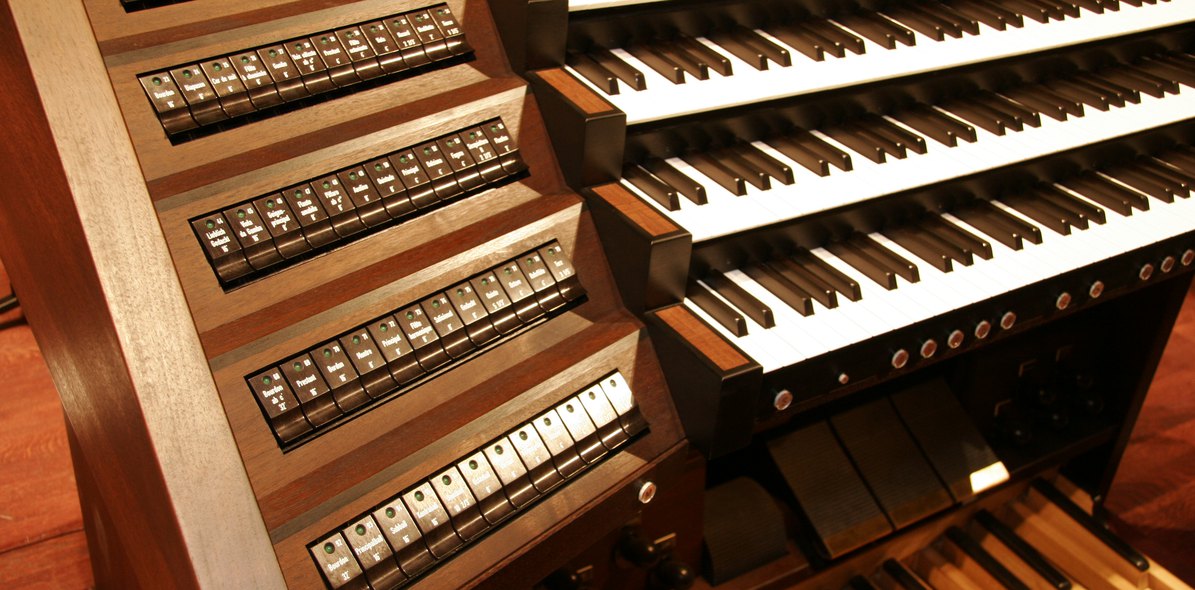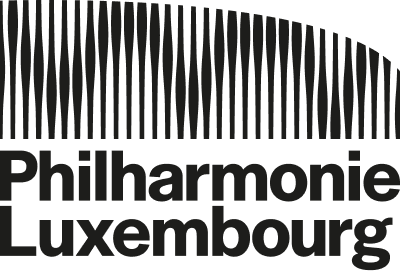 photo: Jörg Hekjal
photo: Jörg HekjalFigures
Four manuals
83 registers
6.768 pipes
The new state of the art Schuke organ of the Philharmonie’s Grand Auditorium unites all the strengths of the biggest concert hall organs in an exceptionnally versatile instrument.
Maurice Clement
Maurice Clement, resident organist at the Philharmonie since 2007 and one of the most innovative organists in Luxembourg, draws astonishing tone colours from his extraordinary instrument.
moreThe organ of the Philharmonie
True tradition is not merely a witness of the past. It is a living force, which stimulates and educates the present. To create something new, one has to connect with tradition. In such a way tradition secures the continuity of the creation. (Igor Stravinsky)
The Philharmonie Luxembourg is located in the heart of Europe. More than in other regions, the cultural life of Luxembourg has been influenced by her surrounding neighbors. Identity and integration both play an important role; the neighbors have gained in their mutual experience, and where people are facing each other, mutual recognition leads to mutual enrichment. This may sound political, but it also describes what the organ has experienced over the course of several centuries. The concept of the new organ in the Philharmonie Luxembourg exactly reflects that development.
Naturally, the organ at the Philharmonie Luxembourg has to be a ‹universal› instrument, although the term ‹universality› cannot fully capture the concept. It is not a clearly defined term, as the style of an instrument constantly has to be redefined. The Luxembourg organ integrates German same as French style, and it also bears characteristics of the Anglo-American organ building style. The organ is mainly defined by its demands. It will become a musical experience, when unheard sounds are evoked. Sounds, that are familiar to us, yet heard in a new experience. It is a discovery journey into the world of sound, which is demanded by the music. To bring this into an aesthetic reality, is the most noble task of a new organ.
The organ facade
Every room possesses its own atmosphere. The moment you enter a room, there is a certain expectation. The visual statement of an organ facade does evoke a certain musical expectation with the visitor, almost tuning him up for the music to come. In this expectation, we are lead through time and space; we are invited to experience structure and recognize correlation; we can guess what to anticipate and focus on the essential.
The organ is not only a musical instrument, but also an architectural element, and as such not to be overlooked. The architectural element is directly related to the architectural concept of the Hall. Essential to the organ is the «body of pipes.» It becomes visible and a visual part of the architecture. It is perfectly predestined to do so. The concept of the facade design in Luxembourg is embedded into another element, which is an essential idea of Christian de Portzamparc, the architect of the Philharmonie Luxembourg: the box-like towers on the sides, the idea of ‹a room within a room› – we are in a room and surrounded by other rooms. The organ picks up this idea by the traditional design of pipe towers, and fields of pipes. The unity of the case is broken up into single segments, ‹chambers of pipes.› Slim towers are reduced to simplicity, geometric forms are dominating, the form of a cylinder (pipe corpus) with conical attachment (pipe feet).
The organ stands out against the (black) nothing. It catches your eye without distracting it; it is architecture, but not art object. Because of its location the organ faces the audience, not obtrusive, but giving the hall a definite face of recognition. An important element of the organ is the color of the case. A solid paint of polished lacquer, different shades of red, lightened up by touches of silver blue.
The sound concept
The role of a concert hall organ is primarily defined by the accompaniment of an orchestra and its ability to become an integral part of this ensemble. We expect room-filling sonic proportions, covering all dynamic shades from the softest Pianissimo to the biggest Forte. Organ and orchestra have to complement each other. As the orchestra plays with certain «registrations,» the concert hall organ must be handled in an orchestral manner.
The organ in the new concert hall of the Luxemburg Philharmonic has 83 stops on four manuals and pedal. The stoplist, created in cooperation with Daniel Roth, is designed like a large symphonic ensemble. The sound concept reflects not only the traditional German and French ideas, but also principles of English and American organ building. It is an instrument, which can provide symphonic sounds of substantial power or real lightness, from crystal clarity to heavy darkness. The concept offers many possibilities of dynamic variation.
In addition to the stoplist the dynamics are enriched by certain technical devices, such as octave couplers (windchests with 73 pipes per rank), and a generous layout with four enclosed divisions. With the exception of the Great division (Hauptwerk), each other division is enclosed including parts of the Pedal. A certain number of stops in both, Positif and Recit, is in a second swell box (swell within the swell). The three manual swells can be coupled to one swell shoe (Generalschweller).
Most important in the overall tonal layout is a differentiated ensemble of characteristic stops. The predominant pitch is the 8' octave. This alone allows great nuances in color and dynamics. 32' and 16' ranks, reeds and octave couplers add to the foundation and expressional qualities of the organ.
The individual divisions are not necessarily related by the old pitch level concept of the ‹Werkprinzip› (32':16':8':4'), but distinguished by individual and characteristic colors. Entirely in accord with the symphonic concept, the addition of stops at the same pitch changes both, timbre and dynamics. The concert hall organ essentially depends on the tonal pyramid of stop families, such as diapasons, flutes, strings, and reeds from the foundation to the mixtures. The complete pyramid of each of those families can be found in either of the three manual divisions – Hauptwerk, Positif, Recit –, as well as in the pedal.





